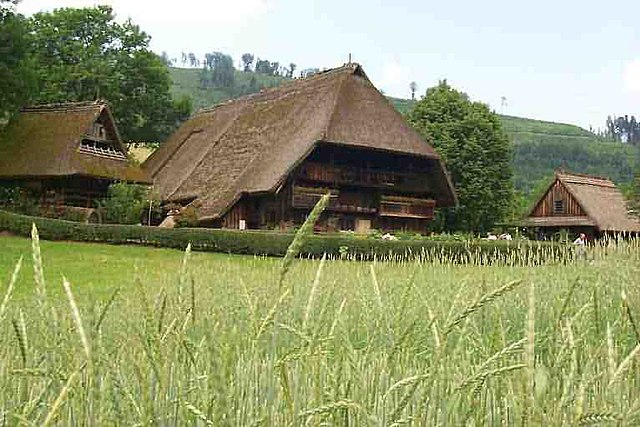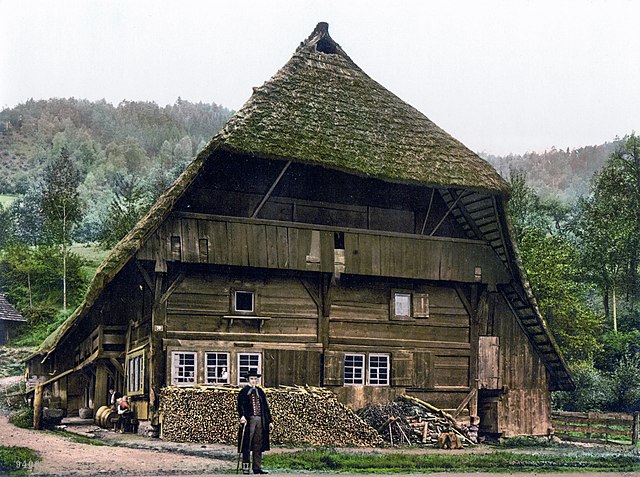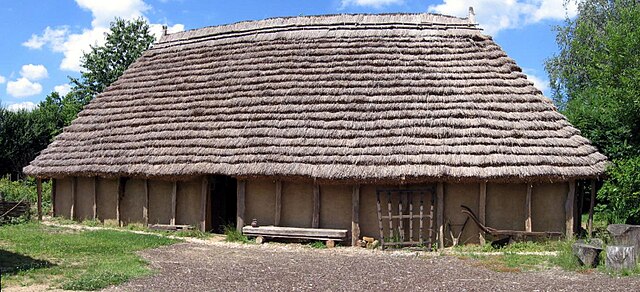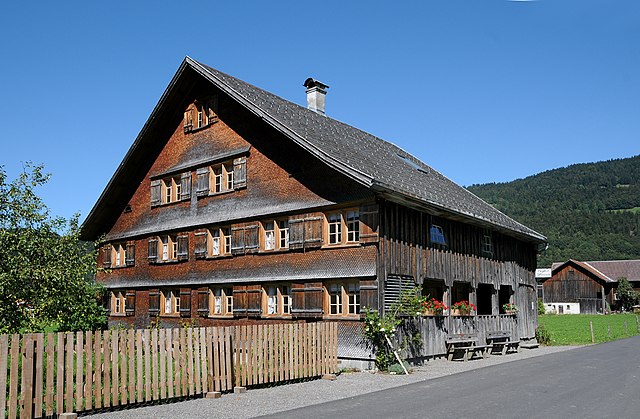The Black Forest house is a byre-dwelling that is found mainly in the central and southern parts of the Black Forest in southwestern Germany. It is characterised externally by a long hipped or half-hipped roof that descends to the height of the ground floor. This type of dwelling is suited to the conditions of the Black Forest: hillside locations, broad tracks, high levels of snowfall and heavy wind loading. Individual farms, such as the Hierahof near Kappel, which are still worked today, are over 400 years old. The Black Forest house is described by Dickinson as very characteristic of the Swabian farmstead type.
The farm of Vogtsbauernhof in the eponymous open-air museum
House of a Black Forest peasant farmer around 1900
Schematic longitudinal section through a Black Forest farmhouse. Key: Sonneneinstrahlung im Sommer = "direction of sun's rays in summer", Sonneneinstrahlung im Winter = "direction of sun's rays in winter", Heuvorräte/Fahrzeuge = "hay stores / vehicles", Schlafräume = "bedrooms", Werkstätten = "workshops", Holzvorräte - "wood stores", Wohnen/Küche = "living area and kitchen", Vieh = "cattle", Keller = "cellar"
Black Forest kitchen with a cocklestove, painting by Georg Saal, 1861
A byre-dwelling is a farmhouse in which the living quarters are combined with the livestock and/or grain barn under the same roof. In the latter case, the building is also called a housebarn in American English.
A reconstruction
A model
Bregenzerwälderhaus in Bezau, Vorarlberg (Austria)
Modern era byre-dwelling in Bavaria (Eckersdorf, Upper Franconia)








